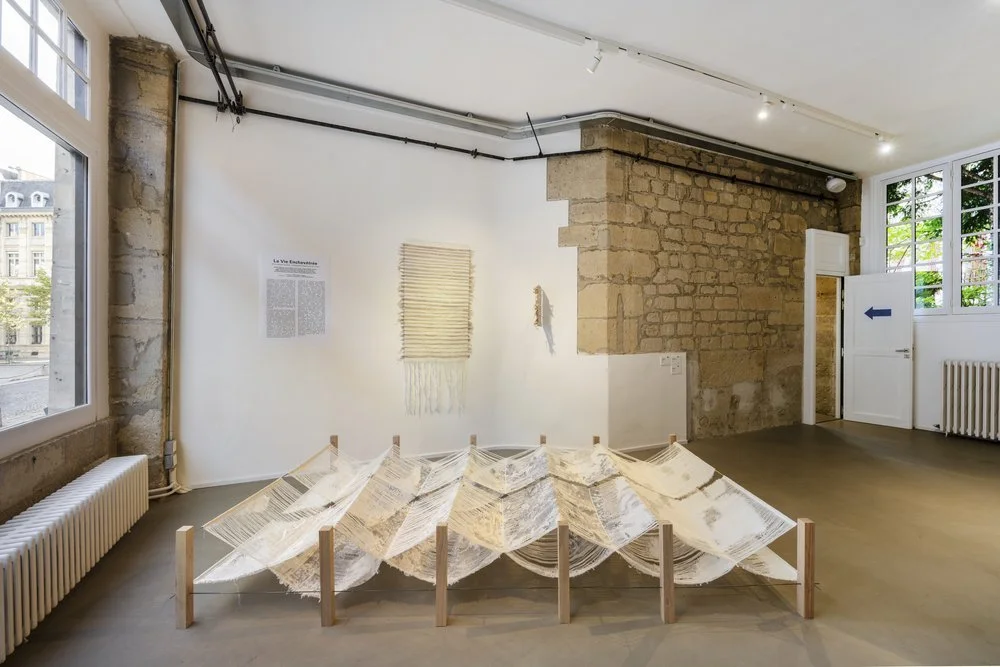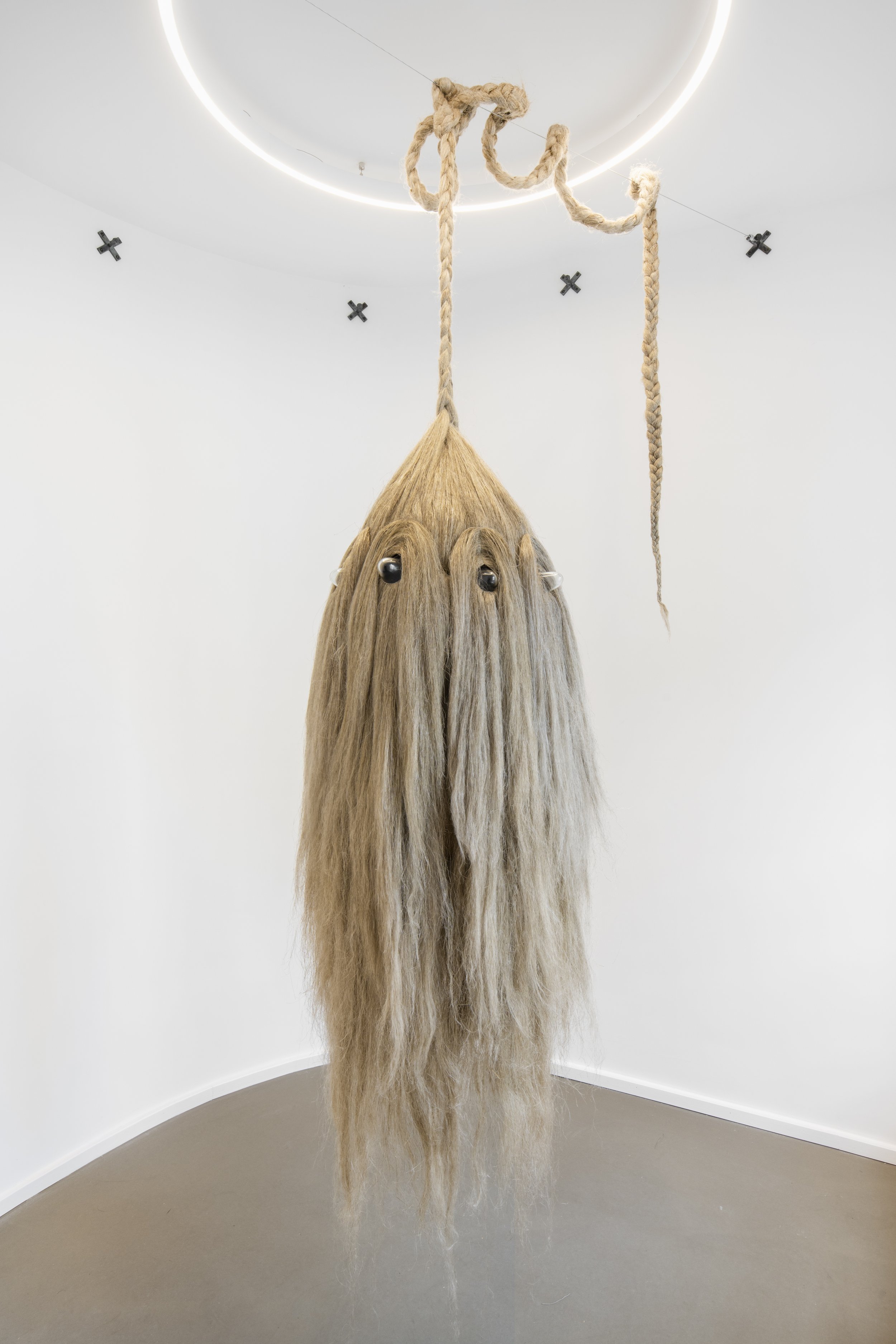
Entangled Life
Interlaced and woven art - Forms and metaphors of the living
Entangled Life
Interlaced and woven art - Forms and metaphors of the living
The exhibition Entangled Life concludes the second season of the Fondation LAccolade's research and creation residencies. The title of the Season and of the exhibition is borrowed from biologist Merlin Sheldrake's essay Entangled Life, which describes the capacities and roles of the mycelium in the concert of living things. Mycelium is all around us, weaving underground networks, joining the plant and animal worlds, making a decisive contribution to the world's habitability. The only way to understand living things is to conceive of them as entangled, intertwined and entangling. The notions of interweaving and entanglement are opposed by those of separation and isolation. To engage with the living is to bind, to link what has been neglected and abandoned, to argue that entanglement is the architecture of the living in all its scope and diversity, and to accept entanglement with nonhumans and all elements of nature. The living world has been entangled continuity from the appearance of the first cells right up to the present day.
At the origin of this Season and exhibition, we formulated a hypothesis. This was to see in the use of multiple textile techniques, which today manifest themselves with renewed power in the field of contemporary creation, a perfect metaphor for the entanglement of the living. The vocabulary and imagination of biology resonate with those of the so-called textile arts. We therefore invited artists who weave, braid, embroider and bind materials, and who celebrate the relationship as that which is knotted in a weft that knows neither beginning nor end. Fiber was omnipresent throughout the Season and the exhibition. If, in the etymological sense, fiber is that which is at the end, in the sense of usage, fiber is that which is at the heart of matter when it is decomposed, unraveled and unravelled. Whether of plant, animal or mineral origin, fiber is a binder, or, closer to our contemporary world, an artificial one, enabling us to weave the skein of globalized communications.
All the works in the exhibition at Wilde depict a metaphorical, baroque landscape of living entanglement, strongly marked by the imprint of a long creative process. On the ground floor, "Texere Urtica", Luz Moreno Pinart's rhizomatic and polychromatic installation in nettle fiber and knitted fabric - a metaphor for the nettle's root network - faces Brankica Zilovic Chauvain's embroidered cartographies, These include "Life", a world map embroidered on felt, the embodiment of the All-World - archipelago or rhizome - and four tondi called "Golden", which reveal the radical transformations of Antarctica accelerated by global warming. "Manifeste - cartographies pour d'autres lieux possibles" by FIBRA collective, a protean work whose materials are of plant and mineral origin, weaves a sensitive and complex cartography of the folds of the living and the earth, full of spirals, detours, but also cries and tears. Janaina Mello Landini's two canvases on linen, from her long-running series "Ciclotrama", are the result of a meticulous, mathematical "unweaving" of entangled cords that multiply and expand endlessly to represent laces, networks and rhizomes. Laura Bartier's "Semence Collective" - the result of a performance in which everyone was invited to delicately sow a clematis seed in a textile weave - raises the plant to our level in a portrait that sketches out a vegetal dance. Élise Peroi's paintings "Mal peignée" and "Pour faire une prairie" - in linen and grasses gleaned from the Jardin Botanique in Brussels - and her sculpture "Jardin Suspendu" - linen and painted silk that represents a fragment, in empty and full duplication, of the famous antique fresco of garden at Villa Livia in Roma, instruct us in a wild but woven garden. Amy Gross's "Flora Hereditas" - sculpture in velvet, beads, printed fabric, glass, paper, pearls and thread - is a fantastic, crackling trompe l'oeil of plant, mycorrhizal, lichenic, bryophytic and animal life. Upstairs, Élodie Antoine's proliferating creatures - parasites in linen thread brushed to evoke hair, mushrooms in silk velvet - contaminate the space in a single organic movement, but leave us free to interpret and feel. Finally, the installation by Les Matribiotes - a collective initiated by Charlotte Gautier Van Tour and Luz Moreno Pinart - invites us to a Symbiosium - a banquet of life and symbiosis - where everything makes sense and works to celebrate microorganisms as our allies and companions, and to express our entanglement with the infinitely small.
Christopher Yggdre - Paris, November 2022

Vues de l’exposition
photographies Martin Argyroglo
Brankica Zilovic Chauvain, Golden Age
























